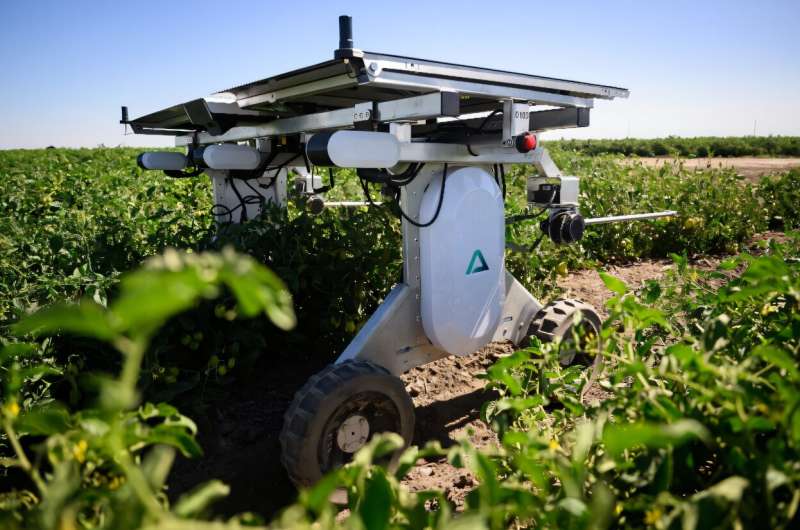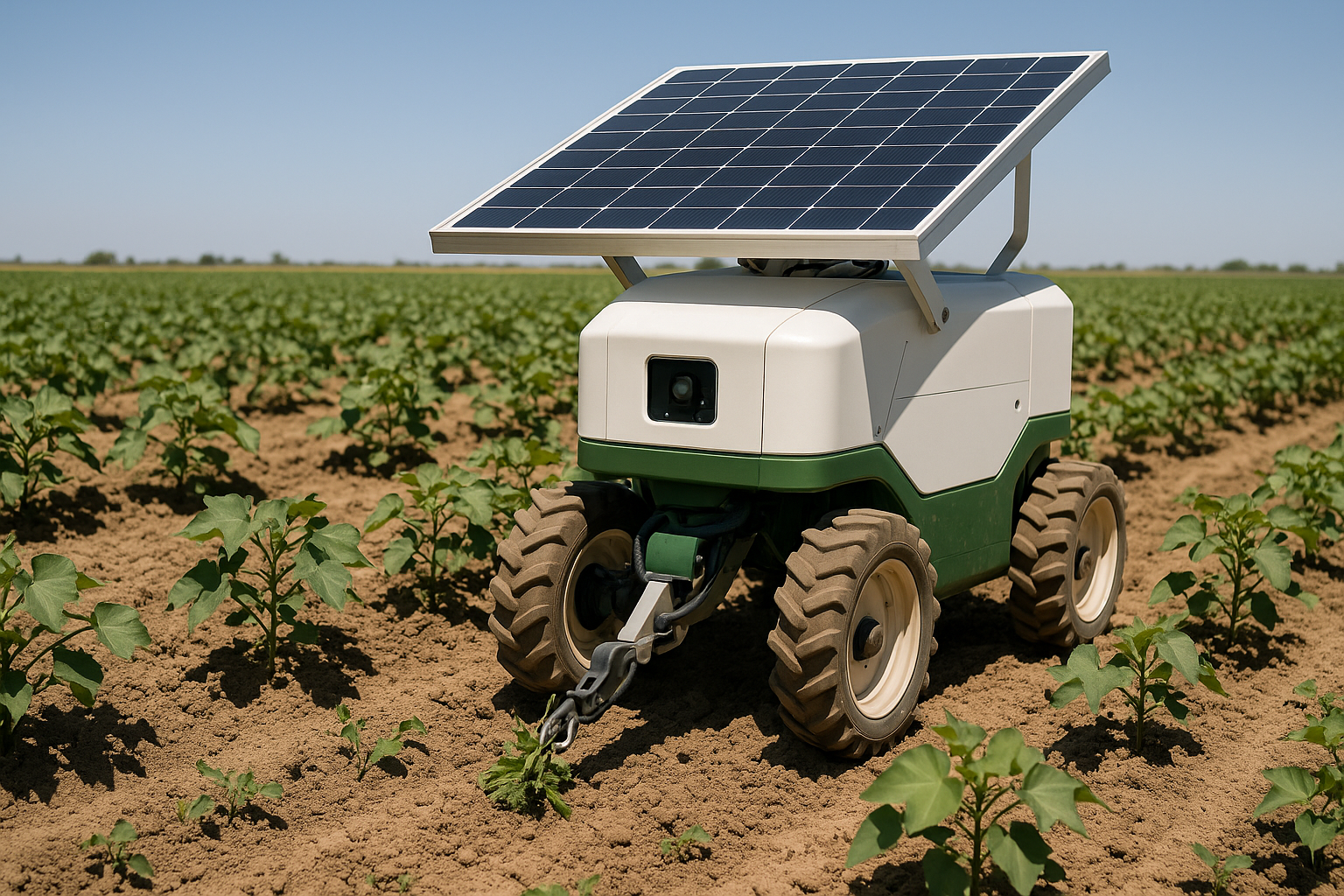In the heart of California’s agricultural belt, a quiet revolution is unfolding. Under the scorching midday sun, a fleet of sun powered, artificially intelligent robots navigates vast cotton fields, meticulously plucking out invasive weeds. These AI robots for weed control are more than just high tech farm tools they represent a groundbreaking solution to some of the most pressing challenges in modern agriculture.
The Rise of AI Robots for Weed Control
The agriculture sector in the United States is grappling with a dual crisis a severe shortage of farm labor and growing weed resistance to traditional herbicides. Farmers face skyrocketing costs, environmental pressures, and the urgent need to produce food sustainably. Against this backdrop, companies like Aigen, a Washington based robotics startup, are stepping in with innovative solutions.
Aigen’s flagship robot, aptly named Element, combines solar power with advanced AI technology to autonomously identify and remove weeds. This eliminates the need for harmful chemicals while reducing labor dependency a win for both the environment and farmers’ bottom lines.
“I really believe this is the biggest thing we can do to improve human health,” says Richard Wurden, co-founder and Chief Technology Officer at Aigen. His optimism is shared by many in the farming community who see AI robots for weed control as the future of agriculture.
Bowles Farm’s Transformation
Bowles Farm, located in Los Banos, California, is one of the early adopters of Aigen’s robotic solution. Spread across hundreds of acres, the farm has historically relied on manual labor and herbicides to combat weed growth a constant and costly battle.
“We were spending thousands each season just to manage weeds, not to mention the environmental toll of chemicals,” explains farm manager Steve Alvarez. Since deploying AI robots for weed control, Bowles Farm has seen a dramatic reduction in herbicide use and labor costs.
The robots, powered entirely by solar energy, patrol the fields day and night, identifying weeds with remarkable precision. The AI system, trained on vast datasets of crop and weed imagery, ensures that only invasive plants are removed, leaving crops undisturbed.
Expert Opinions on AI Robots in Agriculture
Agricultural experts see this as more than a passing trend. Dr. Emily Carson, an agronomist and sustainable farming researcher at Stanford University, believes AI driven weed control marks a significant leap forward.
“AI robots for weed control are addressing multiple issues at once labor shortages, herbicide resistance, and environmental degradation,” Carson notes. “We’re not just talking about efficiency; we’re talking about the long term health of our food system.”
The environmental benefits are equally significant. According to a report by the Environmental Working Group (EWG), over 250 million pounds of herbicides are applied to U.S. farmland annually. Reducing reliance on these chemicals can lower water contamination risks, protect biodiversity, and promote soil health.

Farmers Embrace the Change
Skepticism is natural when introducing new technology to a centuries old industry. But farmers who have experienced the results firsthand are becoming strong advocates.
“At first, I was doubtful how could a machine do what skilled workers do?” shares Maria Gutierrez, a third generation cotton farmer in California’s Central Valley. “But after the first season with AI robots for weed control, I was convinced. We used fewer chemicals, saved money, and our crops looked better than ever.”
For Gutierrez, the benefits go beyond economics. She highlights the reduced exposure to chemicals for her workers and the pride in contributing to a healthier food supply.
While the current focus is on weed removal, the potential applications of AI robotics in agriculture are vast. From crop health monitoring to autonomous planting and harvesting, the technology promises to reshape farming as we know it.
Aigen’s Element is already being upgraded with capabilities to collect real time data on soil conditions, crop health, and pest presence. This data driven approach allows farmers to make informed decisions, optimize yields, and further reduce environmental impact.
However! experts caution that the transition to AI powered farming won’t happen overnight. The upfront costs of the technology, training requirements, and infrastructure adjustments can be significant. Yet, as with most technological shifts, early adopters are likely to reap long term rewards.
The Future of AI Robots for Weed Control
The integration of AI robots for weed control into mainstream agriculture is more than just a futuristic concept it’s happening now. As these robots become more affordable and their technology more sophisticated, their adoption is expected to surge across the United States and beyond.
With growing concerns over food security, environmental sustainability, and labor shortages, the agricultural industry is under immense pressure to evolve. AI robotics offers a practical, scalable, and eco friendly solution to these challenges.
“This isn’t about replacing people it’s about giving farmers tools to grow food more responsibly and efficiently” emphasizes Aigen’s Wurden.
A New Chapter in Sustainable Farming
The story of AI robots for weed control is still being written, but early chapters suggest a promising future. By blending artificial intelligence with renewable energy and practical farming needs, this technology is helping to create a more sustainable, resilient food system.
As these solar powered sentinels quietly patrol the fields, they symbolize more than technological progress they represent hope for a future where agriculture thrives without compromising human health or the planet.


1 thought on “AI Robots for Weed Control: The Future of Sustainable, Chemical Free Farming”